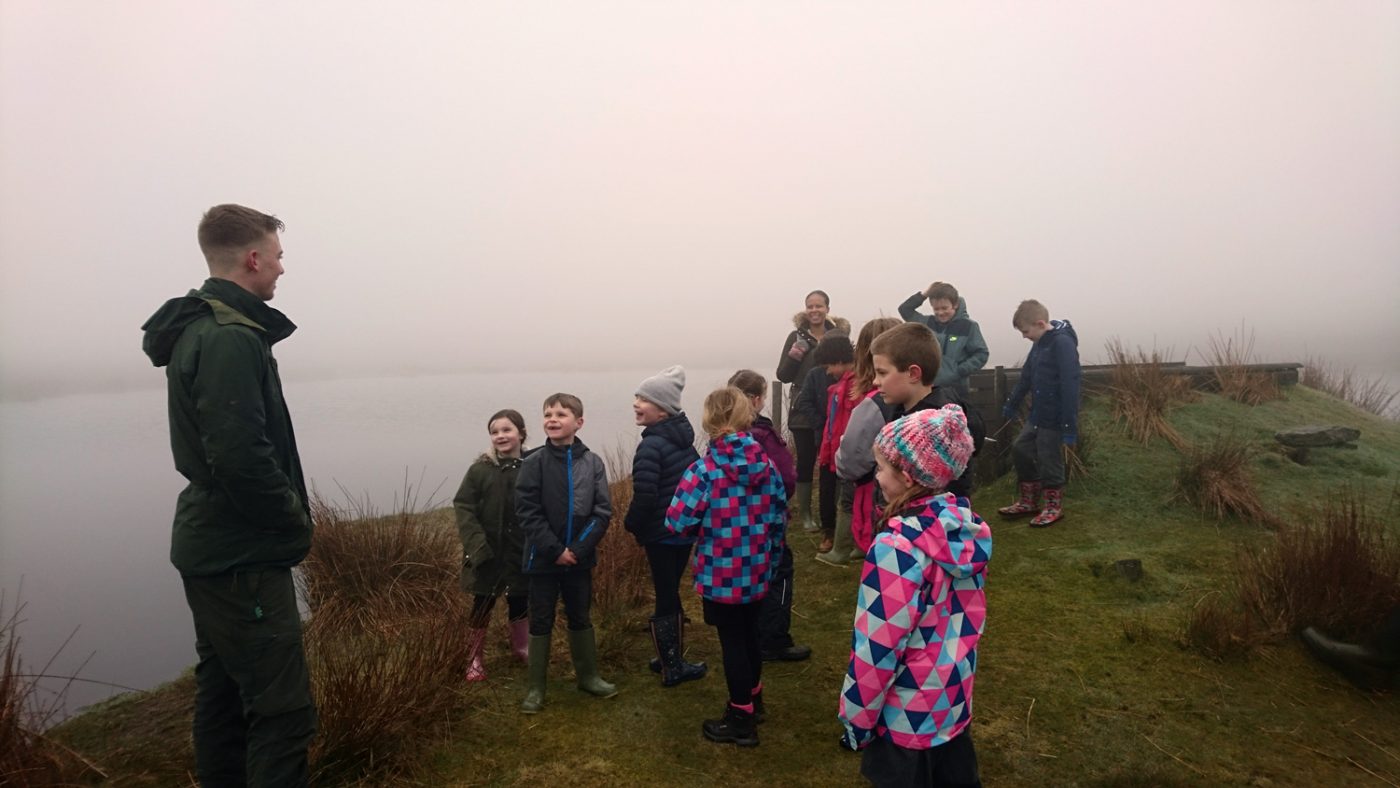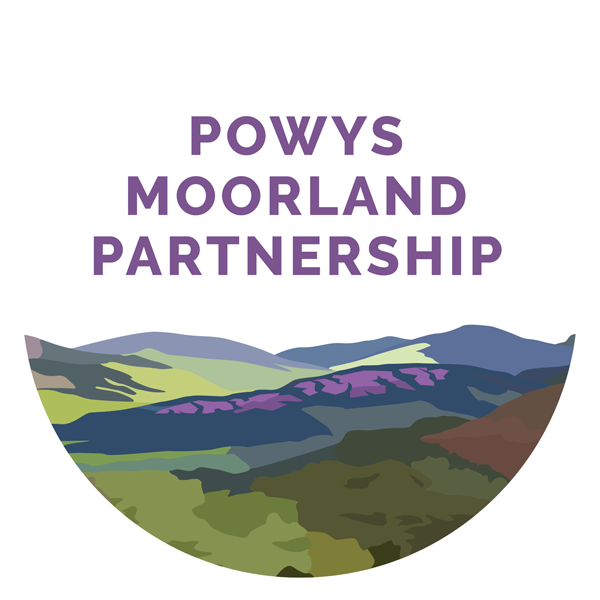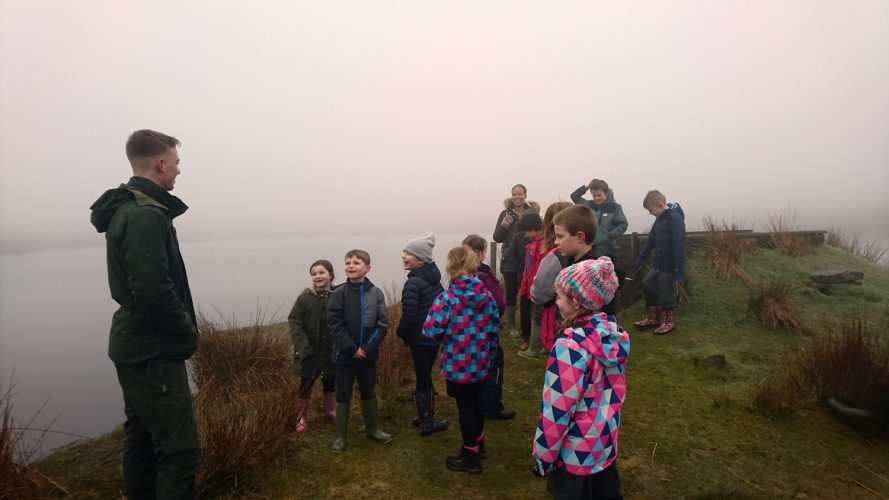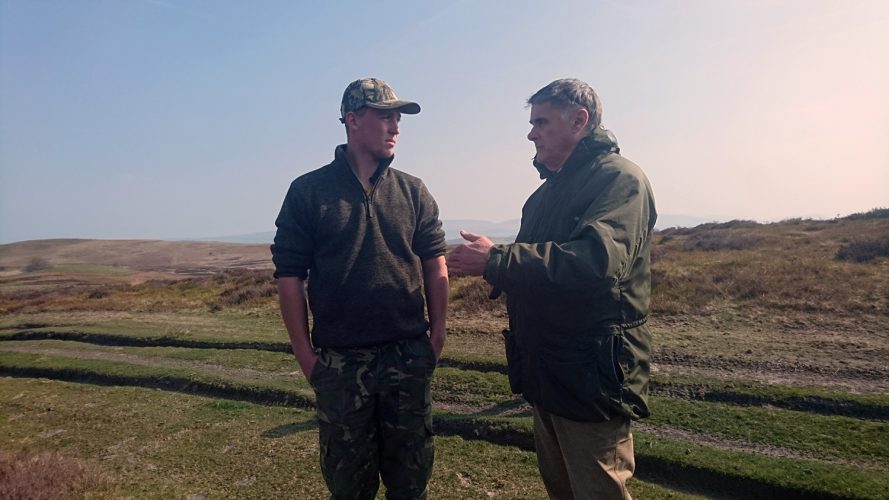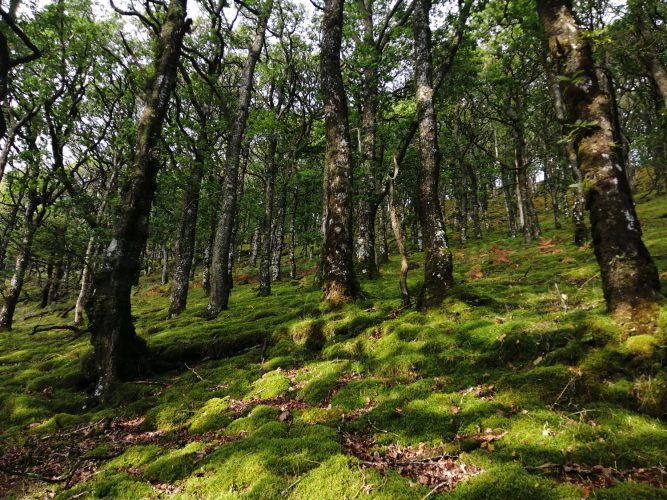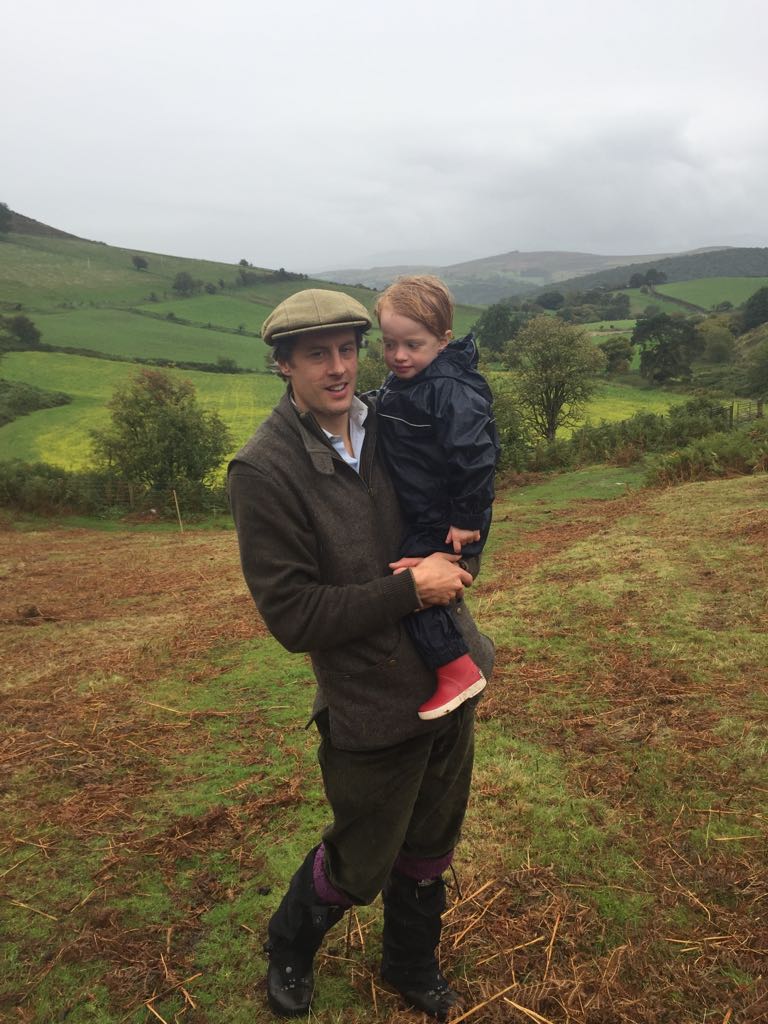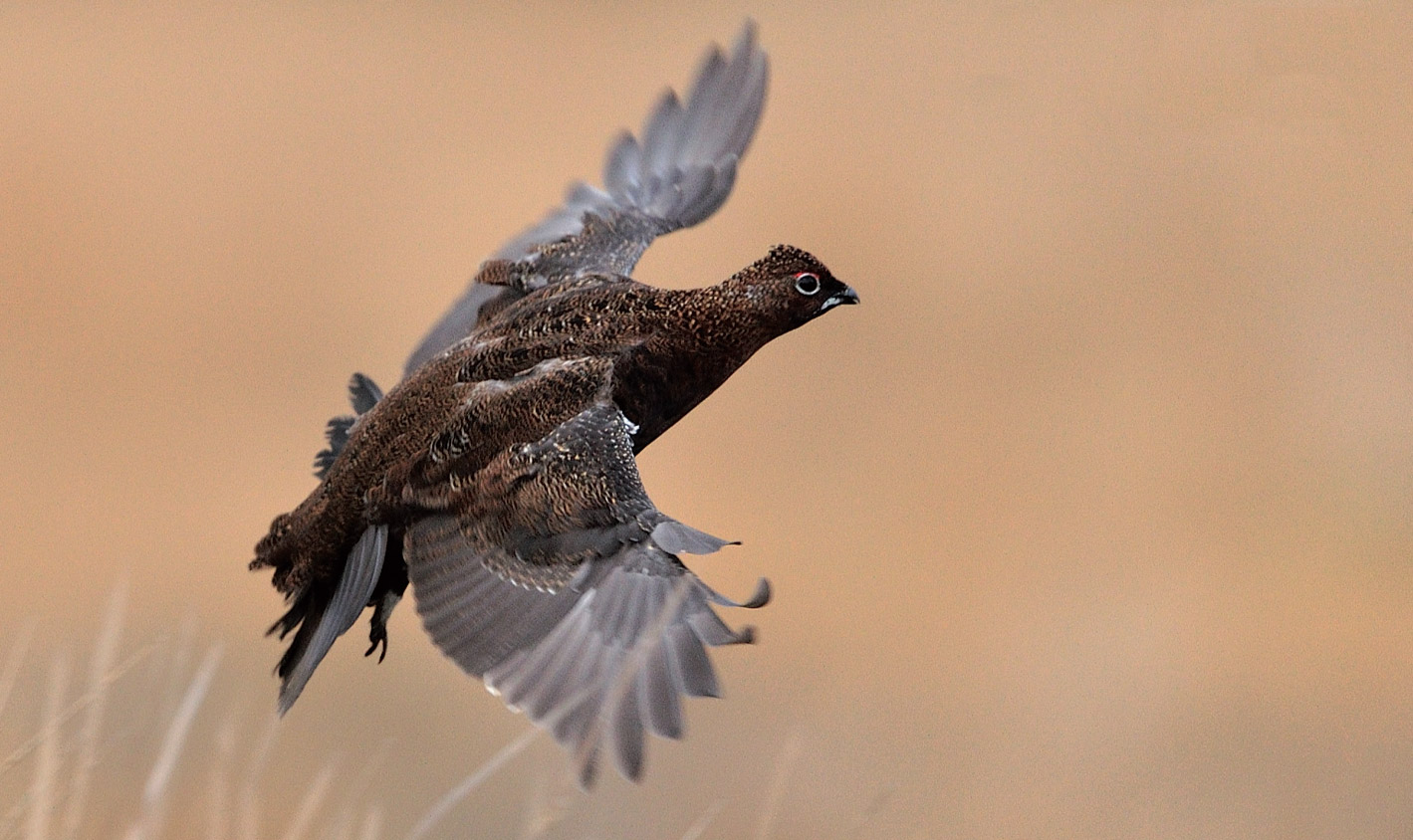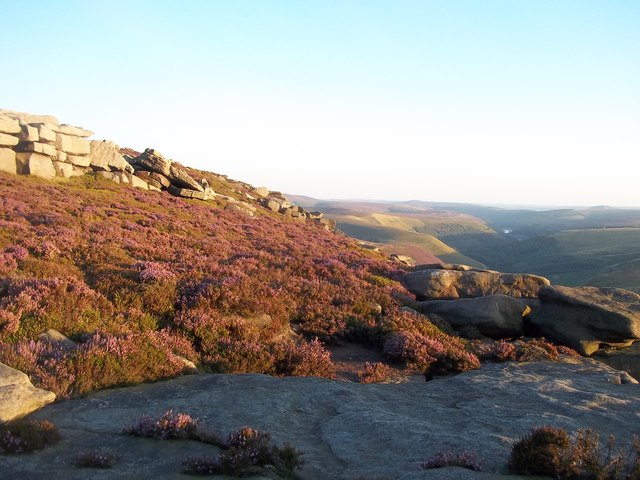More joined up management of the Welsh moors creating a continuous landscape to restore habitats is the challenge of recovering bird species, says Huw Lavin, who started as an apprentice on the Powys Moorland Partnership project 3 years ago.
With a keen interest in game-keepering from school days, Huw spent weekends and all holiday’s out with a local keeper to learn all the skills needed to protect grouse and all other ground nesting birds.
“It’s the only job I’ve ever wanted,” he says, and after two years at Newton Rigg college he landed a full-time job as a keeper on a grouse moor in Wales which is a rare find.
The main problem in Wales is that grouse has disappeared from most of the heather moorlands over the past 30 years as grouse shooting declined, but Huw believes that if we really want to see them recover along with other ground nesting birds there is still time, just, but many more people are needed on the ground.
He believes that in just three years, despite the weather not being conducive to increasing the grouse population, the number overall has flourished once the management to restore the habitats and keep predators under control was implemented.
“We need more people doing the same thing so that we connect up larger areas of land and create a proper continuous landscape scale programme to recover some key upland bird species,” he says.
But Huw believes the job of a gamekeeper is so much bigger than ever and probably needs re-naming as the role does so much more to boost biodiversity.
“We are very much in the spotlight of the media so we must get our story over in a positive way,” he says, and that means taking in everyone’s point of view. It’s not the fault of the public on how they have formed their views with all the pressure that is out there but, we have a responsibility to make sure we message effectively and not aggressively and that has to start with the children.
Huw has hosted several groups of children from Hay and Clyro primary school to explain his work.
“What is great is that they get it and understand that to protect the ground nesting birds we have to protect them from the masses of predators that the Welsh countryside is full of,” says Huw, who explains that to manage the homes of the grouse, a mosaic of heather needs to be created so there is short heather for the food source and longer heather for shelter and nesting.
We have to keep engaging with the public and find different ways of helping people understand the complexities of moorland management especially as Welsh Government is encouraging more people to get outside and connect with nature.
“It’s a special place to work and moorlands are magical so it’s right that more people should experience it, but respecting each other is going to be the biggest challenge.”
Huw has now moved to a top well established grouse moor in the Angus Glens of Scotland as a grouse keeper where he will be one of 11 keepers.
Catherine Hughes
Sustainable Management Scheme facilitator
Sustainable farming and land consultation with farmers
The Powys Moorland Partnership is currently interviewing farmers in and around the project area to feed into the Sustainable farming and our land consultation.
It’s difficult to know how many more trees can be planted and how wildlife corridors can be improved in much of the Radnorshire uplands. The place is already rich in habitats, wildlife, carbon stored in the trees, hedges and soils. Their landscape has changed very little and being well over 1000 feet above sea level taking out hedges and trees was not a consideration. It’s windy up here and you can see what they mean with the shape of individual windswept trees that have been sculpted by the sometimes brutal climate. The trees have protected us, our farms, our wildlife and our livestock, they say. Every farm is individual and needs a different approach. Each has its own outcomes to deliver but it must be the farmer to decide what those are. The call from the farmers is a desperate “please listen to us first, we haven’t just arrived here and finding out what’s what, we have been here for generations and that knowledge has been passed onto us. We think that’s important. We hope you do too.”
Although they recognise the new payments could be scary – because nobody knows yet what they look like – the vast majority have their sleeves rolled up and are ready to embrace the new challenges. Call them wildlife farmers, carbon farmers, whatever farmers, as long as there is a sensible scheme in place that is properly funded and supported by people who know what they are talking about, I get a sense that these farmers are not about to abandon the land, which is a good job because there’s no one else up there who can do what they do.
One farmer told me how his dad would always spend hours clearing the roads in the snow for everyone around here or clearing debris when there was heavy rainfall because the council couldn’t get anywhere near, but today there is usually only one person left working on a farm who doesn’t have enough time and which was what kept rural communities together. The countryside needs more people, not less, and these people feel that wildlife needs them with their grazing stock more than ever.
The economics of the Powys moorlands
The topic of what the British uplands should look like in 100 years time is much discussed and everyone has a view.
The visible threat to our existence posed by climate change when combined with some fundamental changes to the subsidy system post Brexit means that policy makers are very focused on what landscapes can do for the greatest possible good. This creates inevitable tensions from a vocal constituency promoting ‘rewilding’ who seek to end many of the ‘traditional’ uses of moorland landscapes.
In the case of the Powys moors, can farming and recreation compliment the ability for these hills to process rainfall, store carbon, clean the air and host globally rare habitats and bird species? In short, is the way these moors are managed making the most of what this natural environment can do for society? Public money will only go towards public goods in the widest possible sense.
We believe that with the right resources and focus, a sensible balance can be struck. The catch, of course, is that new funding is required to achieve this outcome. This is because nothing is free and the current Government funding ends in 2020.
The PMP tasked the experts, Economics For The Environment (EFTEC), to compare the total value of public goods performed by the Powys moors with what they cost to maintain over a 25 year period.
The benefits that provide actual revenues (money from food production and shooting) are far less than the ongoing management costs that sustain these services. But, since the sum total of all these public goods is a large number – it would cost society £13m or £500k annually to secure equivalent benefits if the moors were not there – it’s surely worth securing these benefits and also increasing them.
As custodians of the Powys moors we strongly advocate the need for full time moorland keepers to work with the graziers to prevent wildfires, promote biodiversity and prevent any more loss of rare heather habitat. Visitors come for the great views but the management that we fund gives these lands their uniqueness with heather and rare species more viewable here than almost anywhere else in Wales.
But, to bring your horse, dog, friend, motorbike, 4×4 to this ground is free. Managing the landscape to make it last, mitigate climate change and produce public goods is not free. There is a large gap here. By valuing its Natural Capital the PMP hopes to add some facts and figures to inform future public policy and to slowly narrow the funding gap to sustain the ongoing love that these lands deserve.
Return of the Welsh grouse
David Thomas is working on an exciting project to restore wildlife to the hills of Powys
Moorland Management
Location: Beacon Hill, Powys
Acreage: 5,000
Percentage in conservation: 100
Funding grants: Sustainable Management Scheme, supported by the Rural Development Programme
Conservation measures: Predator control, brashing, wiping, cool burning, pond digging, and bird surveys.
David Thomas
David Thomas is a gamekeeper on Beacon Hill moor, 5,000 acres of the Crown Estate near Pilleth in Powys, the site of Owain Glyndwr’s famous defeat of the English at the battle of Bryn Glas. The land is grazed by sheep farmers who hold commons’ rights and the shooting rights are rented by a small local syndicate captained by Peter Hood, a retired hill farmer. David’s post is funded by the Welsh Government (WG) as part of the Powys Moorland Partnership which includes three separate moors aiming to restore grouse and other endangered moorland birds.
The project started after the 2013 State of Nature report revealed continued declines of wildlife in Wales. Frustrated that despite a considerable investment in conservation work there was very little success to show, the WG announced a new pilot program called the Nature Fund to deliver environmental, economic and social outcomes through collaborative action within two years. Out of that came the Sustainable Management Scheme (SMS) now funded by the Rural Development Programme. GWCT’s
Teresa Dent and Ian Coghill helped to put together a partnership of land managers and applied successfully to the SMS for funding for the Powys Moorland Partnership and the North Wales Moorland Partnership.
David is in the first year of the current three-year funding programme but has been working full time on the hill for three years. After the initial Nature Fund grant finished in 2015, rather than let the work go to waste, he decided to work for nothing and spent his own money on equipment while waiting for the SMS money to come through.
In the nineteenth century Beacon Hill was a prodigious grouse moor. You can see the remains of a grand Victorian shooting lodge on the hillside and there was even
a railway station to bring guests right up to the moor by train. These days the grouse are clinging on at about 30 brace in the autumn counts and the waders and other moorland species have been similarly reduced. The reasons are complex. Since the 1960s as the great estates disappeared, many of the Welsh uplands were ploughed or planted with woods and the remaining heather moors became isolated.
“Sheep grazing plays a crucial role in keeping down scrub and trees and the farmers on the hill are keen to make the project a success.”
In the 1970s headage payments were introduced under the CAP, which meant farmers received subsides according to the number of sheep on their land. As a result, heather, bracken and grass were over grazed, leaving little, food, nesting habitat or shelter for waders and other birds. Since headage was replaced by area payments after the Foot and Mouth crisis the transformation has been dramatic, with heather and bracken returning to the hillside. David feels the grazing level is about right, except during winter months when ideally the number of sheep would be reduced. Sheep grazing plays a crucial role in keeping down scrub and trees and the farmers on the hill are supportive and keen to make the project a success. It helps that David and Peter were both sheep farmers and they believe most are conservationists at heart. Peter said: They have a soft spot for the hills and the wildlife and they are also tickled pink by the crow control David has achieved.
Overgrazing may have been an issue in the past, but for David the current principal challenge is predation. As with elsewhere in the UK, generalist predator numbers have been increasing steadily. The prime threat to grouse and waders is the fox. The problem lies in the fact that there is no other keepering for grouse or pheasant shoots within 15 miles, so any vacuum created on the hill is quickly filled. Covering 5,000 acres on his own is a big challenge for David. Use of GWCT approved humane snares is essential and they are deployed in a highly targeted manner. A night vision rifle scope is also invaluable as foxes can be alarmed by the infrared lamp. If he
is after a particular fox. David regularly stays up several nights in succession until the small hours of the morning and is still not guaranteed success.
I’m currently putting in an 80-hour week. If it’s dry and there’s a full moon I lamp four or five hours every night. This winter I’ve accounted for 85 foxes up here and each year I get more because I’m getting better at it, but it’s still the tip of the iceberg. Another keeper described the hill as the perfect place for predators as it’s an island moor.
In addition to foxes, avian predators, in particular carrion crows, take the eggs and chicks of ground-nesting birds in the breeding season. David controls them by means of Larsen and ladder traps and has caught about 2,700 in the past three years. His trapping line, which includes tunnel traps for stoats, weasels and rats takes five hours to check every morning. Crow numbers may also have been boosted by less lambing on the hill. Peter explained: Farmers used to control crows because they would kill the newborn lambs. These days you see many who will walk under a crow’s nest without noticing.
Grouse can be found on areas of the moor where they hadn’t been when David started and on one part of the moor numbers have trebled according to this year’s spring counts, but they are starting from a low base and the challenge is great. Other birds species are making a more rapid recovery including mistle thrushes and skylarks and cuckoos can now be heard in profusion in spring. These like to lay their eggs in meadow pipit’s nests, which have also increased. Hare numbers have boomed and so too have kestrels and merlins. This year, more extensive bird counts will be carried out for the first time so progress can be mapped more accurately. Another endangered species to have benefitted, which is close to David’s heart is the curlew. He said: We have managed to increase curlew broods on the hill, which I am delighted by. When you hear the bird’s call on the moor at the end of February, it’s the first sign of spring and I stop to admire the sound spilling from the sky, equalled only by the skylark.
“Everyone involved knows we need to share this special place with everybody.”
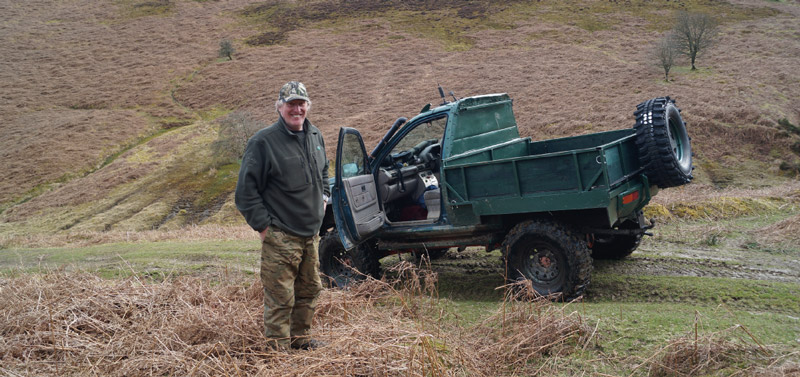
Impressive results on Beacon Hill and other moors in the partnership have fed into the Shropshire & Welsh Marches Recovery Project, a grassroots curlew conservation campaign run by Amanda Perkins. Notes based on GWCT science are now being used as guides by the local community groups involved in the project.
Another large part of David’s work is restoring a balance of habitat by creating a patchwork of heather, bracken, white grass and moss as well as digging ponds to provide water for grouse and to attract insects. In the past, the heather was either overgrazed or allowed to grow too tall and large areas have been overtaken by bracken, which is controlled by wiping the plants with herbicide rather than spraying to avoid damage to the grass and moss beneath. Younger heather can be brashed (cut) and the older, leggier areas show far better restoration through burning. David has initiated a ten-year rotation of small areas of cool burn to avoid damaging the moss and peat underneath. One of the biggest challenges is the tiny window. He explained, Our permitted burning period is two weeks shorter than in England and Scotland. You need three clear sunny days and no snow to burn and because there is so much rainfall it is difficult to keep within the timeframe.
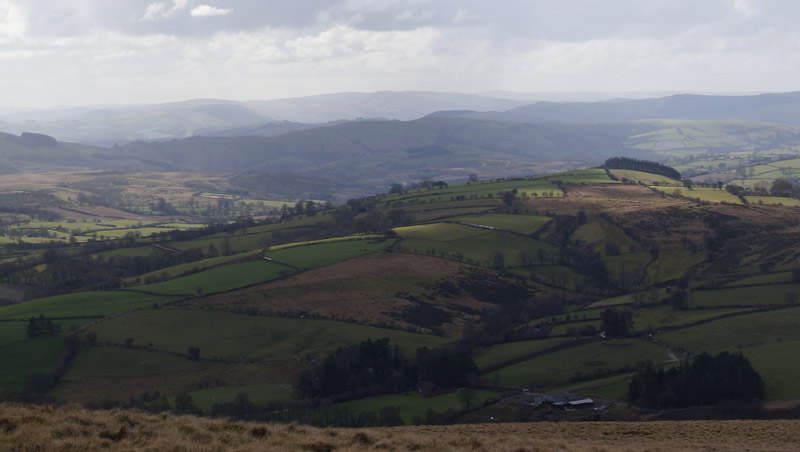
Wildlife Highlights
Red listed
- Cuckoo (left)
- Winchat
- Curlew (inset)
- Mistle thrush
- Ring ousel
- Skylark
- Hen harrier
Amber listed
- Grouse
- Kestrel
- Meadow Pipet
- Merlin Hobby
- Brown hare
Members of the shoot volunteer their time to lend a hand with brashing and burning. They release a few redleg partridges every year for two informal shoot days. Peter, whose family has held the shooting rights since 1950 explained: Our way of shooting is very unusual it’s similar to a family picnic. Wives and children come out on ponies and we drive the ground, it’s more like a grouse count. The butts have long since disappeared, so I place the Guns. In the 1960s the syndicate had eight days with an average bag of 15 brace on each, this year they limited the whole season’s bag to three grouse. The aim is eventually to fund David’s work through one or two let days per year. There is still a way to go, but the syndicate is fully supportive of the broader conservation project and happy to keep going until grouse numbers return.
From the WG’s point of view one of the positives of the SMS approach is the potential through keepering to provide employment in remote upland areas. Another is the opportunity to engage the community and get more members of the public out onto the hill and enjoying the wildlife. David is confident this can be achieved provided existing laws, which require people to stick to footpaths and keep dogs on leads around livestock, are enforced. He said: Everyone involved knows we need to share this special place with everybody. They manage to do it on the grouse moors in the north of England so we can here.
Looking ahead, David is hoping to have an assistant keeper from October until the spring. Current funding is due to end in 2020 and he is hoping that should grouse numbers not yet be sufficient to pay for the management, the wider conservation successes such as greater numbers of curlew and other waders will persuade the Welsh Rural Development Programme to continue supporting the project. He said: I want to see viable Grouse shooting back in Wales with all the benefits to the other ground nesting birds that brings. As the WG has backed the project with considerable investment, I want it to repay their trust and to show that shooting can fund great conservation work.
GWCT Research in Practice
Sustainable Management Scheme
Sue Evans, GWCT Wales director
Following a pilot study in 2013, GWCT, CLA Cymru and FWAG Cymru gathered a number of grouse moor managers together to see if there was an appetite among them to reinstate active moorland management. After a successful joint bid for funding from the Welsh Rural Development Programme under the Sustainable Management Scheme (SMS) the group established the 16,000-acre North Wales Moorland partnership and the 20,000-acre Powys Moorland Partnership in Mid Wales with Cath Hughes acting as facilitator and continued guidance from GWCT.
The demise of wildlife in Wales highlighted by the 2013 State of Nature Report meant that a different approach was crucial in order to save the birds on the endangered list. The SMS focuses on tangible results or outcomes, gives greater flexibility to the farmers/landowners about how these can be achieved and works on a landscape scale through cooperative partnerships. This collaborative approach engages a much greater number of people from across the rural community and beyond, linking the preservation of natural resources to the nation’s health in line with the Well-being of Future Generations (Wales) Act 2015.
This article was written by Joe Dimblebey for the Game and Wildlife Conservation Trust.
Geoff Eyre – Moorland regeneration pioneer
The Fieldsports magazine website recently ran a great insight into the work of a true moorland pioneer: Geoff Eyre.
Since taking on the sporting lease for Howden Moor in Derbyshire’s Peak District in the 1990s, Geoff has achieved spectacular results as he set about regenerating its habitat by applying careful management practice and innovative agronomist principles.
“An ESA (Environmentally Sensitive Areas) programme outlined the importance of heather cover in supporting a diverse number of species. Whilst some attempt was made to reverse heather loss, I asked if I could try a different approach.”
Geoff pioneered an ingenious use of smoke along with careful seed improvement, controlled burning, cutting and spraying. Consequently, thousands of acres of moorland have recovered, and his methods are now followed on moors across the north of England and Scotland.
This in turn has resulted in increased employment opportunities for keepers to look after the increasing acreages of productive heather areas.
There is a thriving birdlife at Howden, including a third of the Peak District’s ring ouzels. Big numbers of golden plover, curlew, lapwings and an increasing number of black game. In fact all typical moorland birds. And Geoff has given talks to birdwatching clubs. There is an increasing number of peregrines and merlins, and a high density of goshawks, and relative newcomers buzzards and ravens! “I had never seen a raven until 10 years ago – now we seem to have lots of them.”
And furthermore, thousands of walkers now have better-than-ever views of swathes of purple heather!
Scientific appraisal
You can read a detailed scientific appraisal of the management of Howden Moor, including a downloadable PDF, on the Science Direct website.
Keep in touch, get involved.
We will be putting on various events over the next 12 months. If you would like to get involved, have some ideas please contact Catherine on urmyc.sdnalroomsywop@tcatnoc
